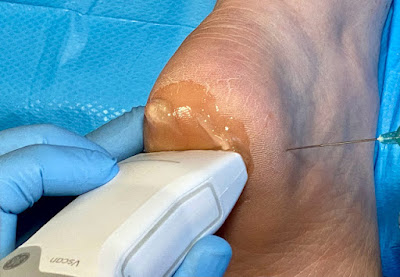PRP is a treatment is used for an increasingly wide variety of MSK problems, particularly tendon, ligament, muscle and joint pain. Conditions like osteoarthritis, tennis elbow, plantar fasciitis and chronic muscle and ligament injuries can be treated using PRP.
We know that blood contains various growth factors that trigger the healing response when we are injured. These growth factors are found in the platelets, the fragments in our blood that are important in clotting. PRP essentially hijacks this system by isolating and then injecting these platelets into the body in order to help stimulate a healing response.
 |
| 1) A blood sample is taken (picture from arthrex.com) |
The process involves taking some blood from the patient, spinning it in a centrifuge and then separating out the platelets which contain all those growth and repair factors. This concentrated serum is then injected into the joint, tendon, ligament etc.
 |
| 2) The blood sample in spun in a centrifuge |
 |
| 3) The platelet rich portion is separated from the rest of the blood |
 |
| 4) The PRP in a syringe ready for injecting |
 |
| 5) The PRP is then injected into the target area using ultrasound guidance |
__________________________________________________________________________
This article provides general information related to various medical conditions and their treatment. It is intended for informational purposes only. It is not a substitute for professional advice, diagnosis or treatment provided by a doctor or other qualified health care professional. The information provided does not constitute personal advice or guarantee of outcome and should not be used to diagnose yourself or others. You should never ignore advice provided by a health care professional because of something you have seen or read on this website. You should always consult a doctor or other qualified health care professional for personal medical advice.
